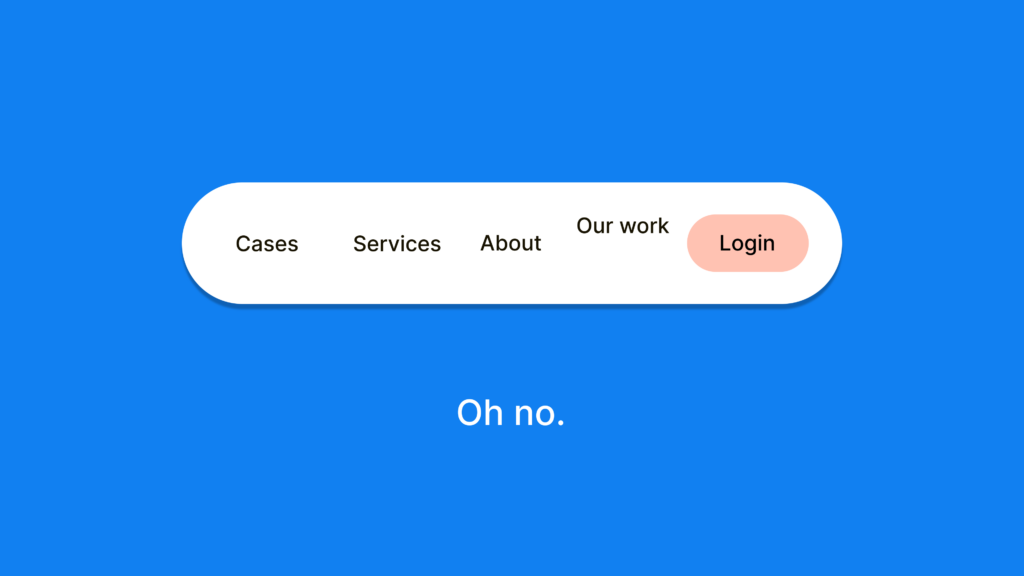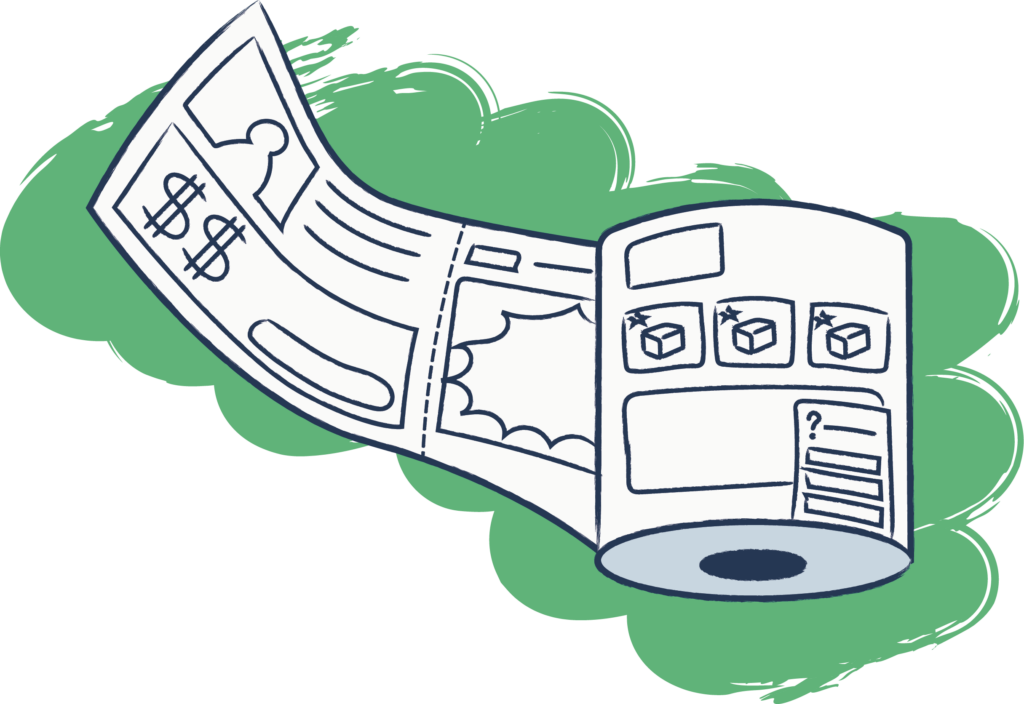
Are you ready to get under your customer’s skin?
Imagine the following situation. You walk into your favorite clothing shop and are greeted in a very enthusiastic manner by Jane, your longtime friend and shop owner.
‘Hey Dave, how are you? How are the kids?’
After some minutes of small talk, Jane looks at you for just a few seconds, then walks up to a clothing rack, takes out one pair of trousers, one shirt and hands it over to you.
‘Here, try this on, these trousers fit the black jacket you bought last spring, and this shirt suits the new shoes you bought in the store across the street a couple of weeks ago.’
You try it on and indeed it fits and it matches the clothes in your closet perfectly since Jane knows all about you.
Now imagine you can give your customers this same personal experience online. Would you be willing and able to do so? And do you think you have the data, tools and skills to do this?
If the answer to both questions is yes, then there is not much between you and delivering this, because you already have a lot to make this happen.
Your customers visit your website or your store, they open and read your mails, they interact with you all the time and you already have the possibility to know all about them. You can know what they have bought, what they have seen on your website – across all devices – and what they have added to their shopping basket, wish list or favorites. You can know what they like, dislike, what their home situation is and what makes them tick.
“Are you ready to give your customers the ultimate personalized experience?”
So the question is not so much if you are willing to do so, but more if you are ready to give your customers this ultimate personalized experience? Are you ready to show them the items that match what they already have bought? Are you ready to show them the content they want, completed with content that is complementary to what they already know and have seen?
Are your customer touchpoints clearly defined and equipped with all needed data to deliver this personalized experience across all channels and at every interaction and touchpoint you have with your customer?
It is not enough anymore to analyze the funnel of your interactions, it is not enough to say that you collect data, that you analyze data and use this to segment emails and other communications, this is the age of one to one communications, and the customers expect you to know them, to show them relevant content and offerings and give them the feeling that you understand their every need and can fulfil their every desire.
This is not science fiction anymore, you can know every interaction your customer has done with you, it is merely a question of gathering all relevant data and using them in the right manner.
“This is the age of one to one communications, and the customers expect you to know them.”
With ‘relevant’ being a key word in this context. Data is all around, data is everywhere you look, but data is only relevant if you can do something with it that helps you improve the customer journey, that helps you optimize the interaction with your customer. Collecting data on your customer interactions is not a goal, it is nothing more than a prerequisite to perform personalization.
“Collecting data on your customer interactions is not a goal, it is nothing more than a prerequisite to perform personalization.”
“Who is my customer?”
Where does he or she come from? What are their hobbies? What makes them tick? What sets them off and what makes them run away from you as fast as they can? These questions aren’t any different in the digital age than they are in the brick and mortar environment.
What are you selling and to whom are you selling it to? If there is no fit between your offer and the people coming into your store, chances are rather slim that you will sell a lot. And don’t forget, there is no such thing as a single customer profile. You have a lot of different customers, and while everybody is different, it is possible to group your customers into a range of similar profiles, also known as personas.
Once you have defined your personas and made sure they match your customer base, you can start to design offers tailor-made to the different personas you have defined and give them the service they need.
Jane will most likely not offer the same pair of trousers and shirt to another man coming into the store, since his morphology and taste will most likely not be the same. And if she does not know the man coming in, she will look at how the man is dressed now, his morphology, his age, she will observe him while he strolls through the store and then instantly build a profile of what he might like and will start offering some suggestions. They will be very general and safe, and as she gets no’s, scared looks or consenting nods, she will start to narrow her suggestions down to what will fit his taste and look.
This is how all interactions with customers should be in these times. Whether it is on your website, via email, social media, telephone or any other type of interaction, the customer is sharing information about their personal interests with you, you should take them in – taking all legal and GDPR rules into account, off course – analyze them and use them to serve your customer in the best possible way.
“Only those who manage to truly get to know the customer and can offer them what they need and want will be around tomorrow.”
Only those who manage to truly get to know the customer and can offer them what they need and want – even before they know it themselves – will be around tomorrow.
There is no such thing as a remedy that cures all deceases, as there is no such thing as an answer to every question. Every human is unique and therefore deserves a unique and personal treatment.
Now that you know how you should start with personalization, I can hear the next question: ‘Do I need a tool to do this and if so, what tool?’
The answer to the first part is: ‘Yes, you do.’ Unless you run a brick and mortar clothing shop like Jane where you know every customer in person and have no online presence, you won’t be able to know everything and you need a tool that helps you in collecting, analyzing, interpreting and using this data to generate this perfect experience.
As for the second part of the question, there are many tools around that do this, in different shapes and sizes, with less or more features and different cost attached to it. To find the tool that best fits your requirements, you should always start from the customer and ask a few questions: How many customers do I have? How many interactions are taking place through how many touchpoints? Do I have a website and a social media plan, do I communicate via email and SMS and telephone? Do I want to make every journey personal and do I have several thousands, even hundreds of thousands of visitors that I want to convert into loyal customers? The answers to these and a lot more questions define what kind of solution you need.

And if you don’t find a way to get through this thick forest of questions – which by the way is nothing to be ashamed of, because you should focus on your core business and not on the technicalities of it all – then there are companies – like Humix – who are specialized in analyzing, defining, designing and optimizing personalized user experiences. They are vendor independent and will, after a deep analysis of your needs and objectives, help you in selecting a fitting solution that can help you make your journeys personal and are ready to grow with you. Which is a very important thing to think about along the whole journey of implementing personalization.
“Start small, start focused, and grow as you go along.”
Don’t buy the tools that offer you the world, the universe and beyond, if you are not ready or willing to offer the world and universe to your customers. They will cost you a lot of money and if you don’t use all their potential, chances are you will not use them at all, which is a big waste of your time and money and does not help you in taking the personalization leap.
So always remember, start small, start focused and grow as you go along. Slowly get under your customer’s skin, until you know every little detail about them and use it in the best possible manner.
And one more last thing: please don’t go too far in the personalization. Customers do realize they share a lot with you and – consciously or subconsciously – know that you may know more about them than they do themselves, but do not confront them with that knowledge in a confronting or shocking manner. That level of personalization will drive them away.
Which brings me back to ‘make it relevant, use what brings added value to your customer and yourself, forget the rest.’

And don’t forget: it is personal!


